Hello again!
In the coming weeks, I want to share with the people the archdiocese some reflections around the theme of end-of-life issues. These reflections will appear in our archdiocesan newspaper, The Pilot, and also here in my blog each week.
Certainly, Mother Teresa, whose whole ministry was centered around care for the dying, is a good place to start. So, today I want to share with you some thoughts about our tradition of the Church’s love and care for people at the end stages of life.
Better ways to care for the dying
Surely I shall never forget my first encounter with Mother Teresa of Calcutta. It was in November of 1970 and I was teaching at Catholic University. We had received notice that the university was awarding an honorary doctorate to a missionary nun in the Caldwell Auditorium. Realizing that few people would bother to attend, I decided "to make the sacrifice" in solidarity with a fellow religious. Only a handful of people showed up. Cardinal Patrick O’Boyle presided and Eileen Egan, an early follower of Dorothy Day who was at Catholic Relief Services (CRS) was charged with introducing the nun to the assembly. None of us had ever heard of Mother Teresa of Calcutta.
Eileen Egan described her first meeting with Mother Teresa in the streets of the slums of Calcutta. She described seeing a wheelbarrow containing the filthy body of a dying man covered with open sores filled with maggots. She said that it seemed that the wheelbarrow moved on its own. Then she spied the diminutive nun pushing it. She learned that Mother and her sisters, for twenty years had been gathering the dying people abandoned in the streets, carrying them to an old former Hindu temple and taking care of them so that they could die surrounded by love.
I remember looking around the auditorium and seeing many people crying as Eileen Egan described Mother Teresa’s ministry to the dying. Soon the world was to learn about this amazing religious woman thanks to English journalist Malcolm Muggeridge’s film and book, both called "Something Beautiful for God."
Mother Teresa is part of a long tradition of caring for the dying in our Church. In our own country we have the moving testimony of Rose Hawthorne, the daughter of Nathaniel Hawthorne from Massachusetts. Rose founded a religious order in the early 1900s to care for people dying of cancer. Here in the archdiocese, the Little Sisters of the Poor and the Carmelites Sisters for the Aged and Infirm are excellent current examples of the Church’s tradition of loving care for the dying.
In our community the hospice movement is an extraordinary service to those at the end stages of life and their families. Hospice was founded by a nurse in England, Cicely Saunders. She had worked as a volunteer at St. Luke’s Home for the Dying Poor. She founded hospice to deal with the "total pain" of those who are dying. This includes not just physical suffering but the psychological and spiritual suffering people experience at the end of life. In 1971, Florence Wald left her position as dean of the Yale School of Nursing, to bring hospice to the United States.
Hospice was one of the first programs to use modern pain management techniques to care compassionately for the dying. Today there are almost 5,000 hospice programs in the United States with an organized team approach to professional care giving and 1.4 million people are enrolled in hospice care each year.
Hospice is not a place, but a concept of care. Eighty percent of hospice care is provided in the patient’s home, a family member’s home or a nursing home. Hospice cared for my Dad when he was dying. In my family, we are all grateful for the excellent care that hospice provided. The nurses and hospice workers truly ministered to the whole family.
Taking care of people at the end of their lives, giving palliative care to address the physical pain and bringing reassurance to people dealing with fear and frustration is truly doing something beautiful for God. How many times do we pray to our Blessed Mother, "Pray for us sinners now and at the hour of our death." At the hour of our death, we need prayers and support. In popular devotion, Saint Joseph is called the patron of a happy death because by tradition it is said that he died surrounded by the loving embrace of Jesus and Mary.
We all want what is best for our loved ones, especially at the end of life’s journey. It is my hope that this series of reflections, to be posted on my blog and published in The Pilot, will demonstrate that physician assisted suicide is an assault on human dignity. It must never be seen as a viable alternative to hospice and palliative care that address not only people’s pain but also their fears and frustration.
– – –
Last Thursday, I was visited by the local leadership team of the Catholic Daughters of the Americas. 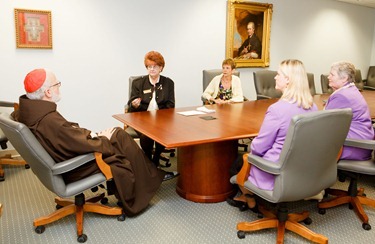
They gave me an update on some of their activities, including new groups they are starting for young women. We are very grateful for the extraordinary witness that they give in the archdiocese and all of their support.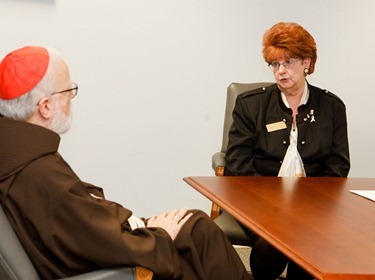
Connie Pagan is the Mass. State Reagent of the CDA
– – –
Then, that afternoon, I was very happy to welcome the board members of Catholic Charities here to the Pastoral Center. We began with a 4:30 Mass here at the Pastoral Center followed by our board meeting.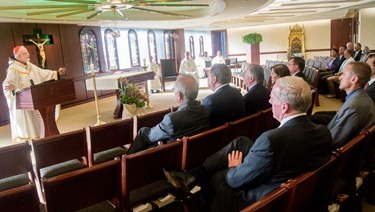
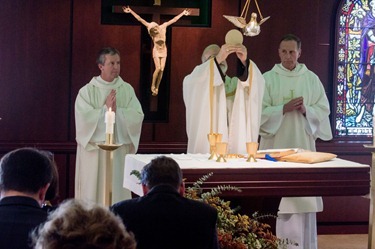
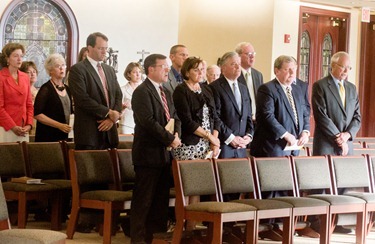
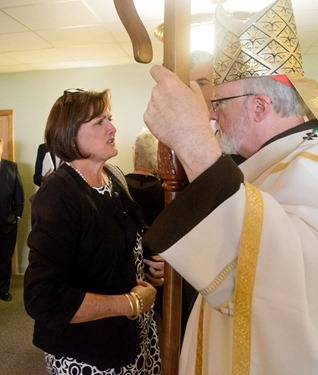
Greeting Debbie Rambo, president of Catholic Charities
– – –
Then, from there, I went to attend the fundraising gala for the St. Boniface Haiti Foundation at Granite Links Golf Course in Quincy.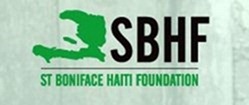
I thanked the guests for their support of the wonderful work that the foundation is doing to improve healthcare, community development and education in Haiti. They had a wonderful turnout for their event, and I was very happy to see the response of the community to this important ministry.
– – –
On Friday, I celebrated the Mass at Archbishop Williams High School in Braintree to mark the 200th anniversary of the Sisters of Charity of Nazareth.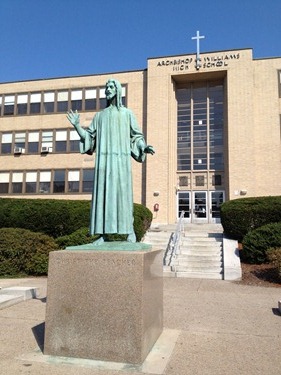
The sisters founded the school in 1949 and there have been over 160 sisters who have served at the school over the years, providing an invaluable contribution to the archdiocese. 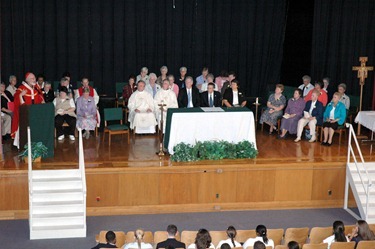



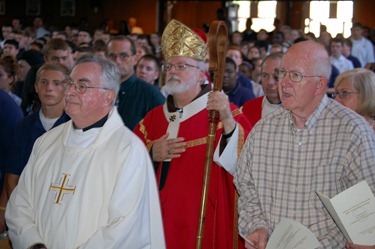

Many sisters who had been teachers, or were themselves graduates of the high school, were present for the Mass.
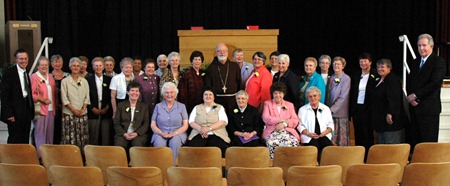
Today, the school is flourishing and the people still feel a great debt of gratitude to the Sisters of Charity for initiating this marvelous ministry that continues so well at Archbishop Williams High School.
– – –
Saturday, I was pleased to have the opportunity to join in the 150th anniversary Mass for Boston College and Boston College High School celebrated at Fenway Park.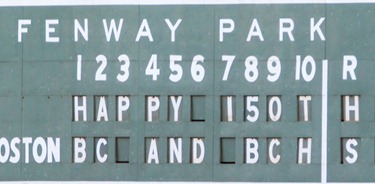
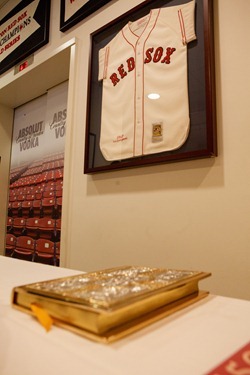
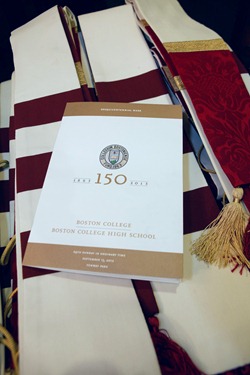
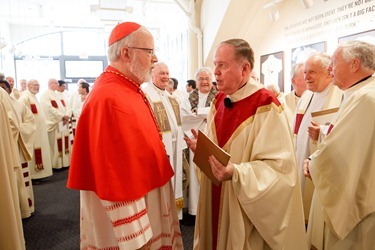
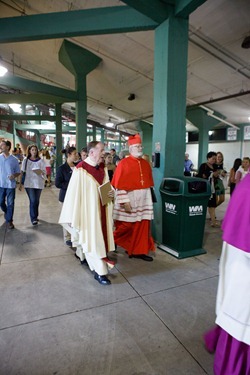
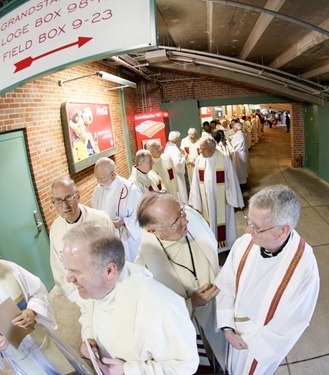
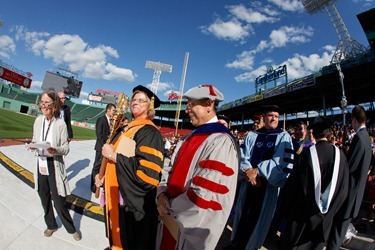
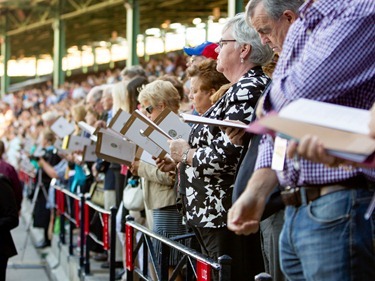
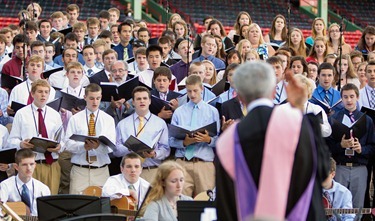
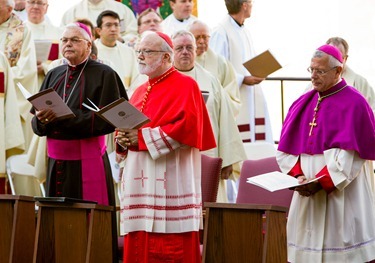
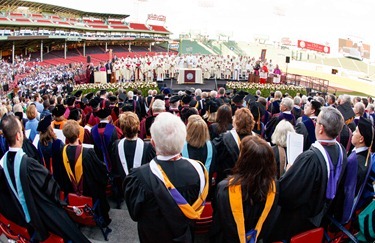
It was impressive to see the large crowd of 20,000 people there. There was a great spirit of reverence in the park. In a way, it brought together two great Boston icons: Boston College and Fenway Park.

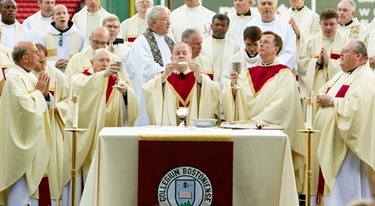
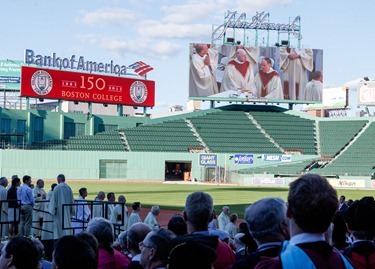
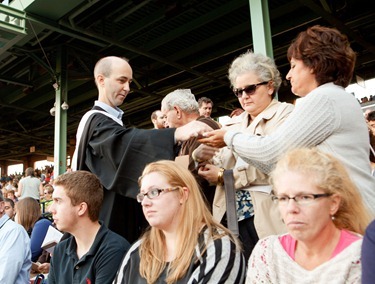
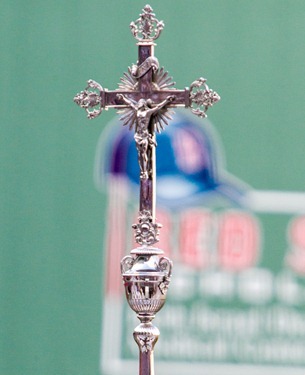
Both schools have their roots in the work of Jesuit Father John McElroy, who was a very fascinating figure.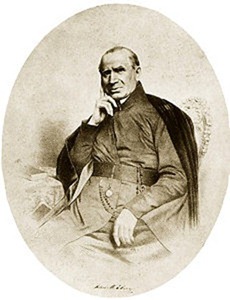
In the early 19th century he was made pastor of a parish in Frederick, Maryland. He worked to expand the parish and establish a school and orphanage. It grew to be what, at the time, was the largest parish in the country.
When he was 63 years old, he and another priest, Father Anthony Rey, became the first Catholic priests to serve as military chaplains. He served during the Mexican-American war ministering to the soldiers at Matamoros. When he finished his service in the military, he came to Boston and saw the need of the immigrants here, particularly the Irish. He started a college in Boston’s South End that, for many years, offered one 7-year program that was something like a combined high school/ college. This was not unusual in those days.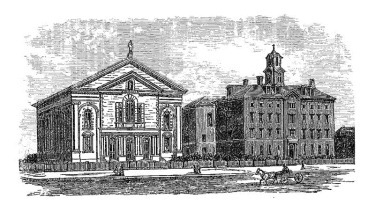
So, at their founding, Boston College High School and Boston College were one institution.
Eventually, as enrollment grew, the two institutions split, and now both are separate ministries of the New England Province of Jesuits. My understanding is that Boston College has had something like 160,000 graduates since that time.
In my remarks at the Mass, I mentioned how very important Boston College and Boston College High School have been in changing the face of Boston and preparing immigrants to enter the professions and to receive a university education. They were the facilitators of what was really sort of a “Catholic emancipation” in Boston.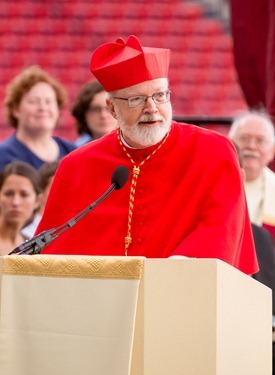
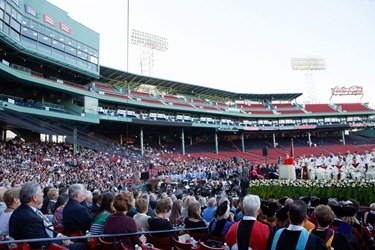
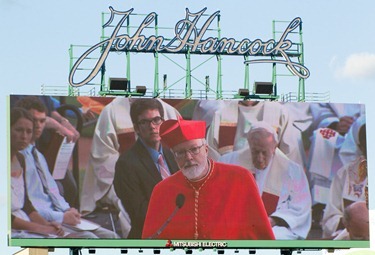
The weather was perfect for the Mass. It was just an uplifting experience.
– – –
On Sunday, I celebrated Mass in Spanish at the Cathedral for the Feast of the Holy Cross, which is the patronal feast of our Cathedral.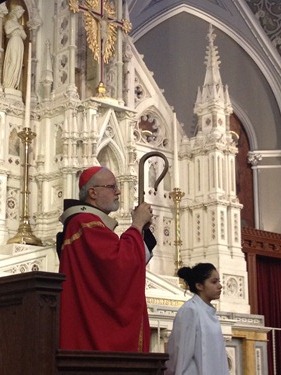
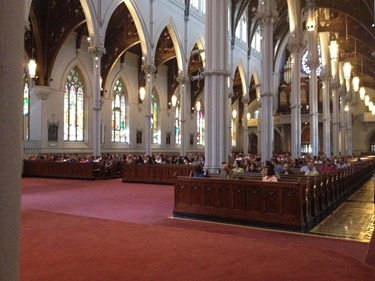
In my homily, I spoke of the two stained-glass windows that are on either side of the altar in the Cathedral.
One shows St. Helena finding the True Cross.
The other depicts Byzantine Emperor Heraclius who rescued the cross from the Persians 300 years later and was trying to return it to the Holy Sepulchre. 
According to the story, he was unable to enter the church until he stripped himself of his royal attire, removing his crown and his shoes.
After the Mass, we invited people to come forward to venerate the relic of the True Cross which is one of the treasures of our Cathedral and has been here since the founding of the diocese.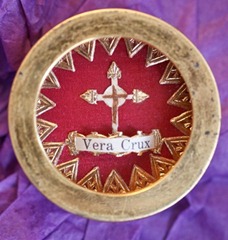
– – –
That afternoon we were very pleased to welcome Msgr. Leo Maasburg to the Cathedral for a talk on the life of Blessed Mother Teresa.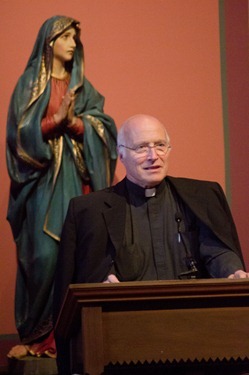
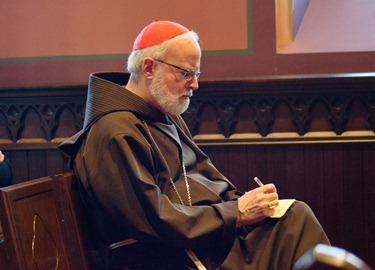
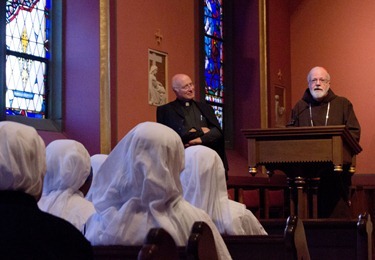
Msgr. Maasburg is the head of the Society for the Propagation of the Faith for the country of Austria. For many years, he worked very closely with Mother Teresa as her spiritual advisor and translator and he traveled with her to many countries in the world to assist her.
He has written an inspiring book of his reflections on those experiences with Mother Teresa. He gave a talk here at the Cathedral. He gave a wonderful talk because not only does he share many of the anecdotes of moments with Mother Teresa, but he also uses those experiences to explain the theology of Mother Teresa.
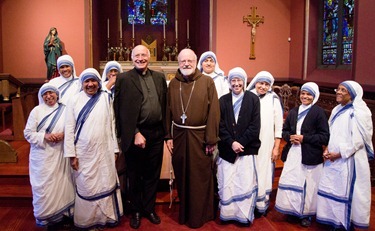
We are very grateful to Alexis Walkenstein for having made arrangements for Msgr. Maasburg to come to Boston.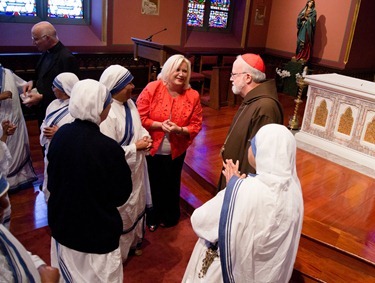
– – –
On Monday I participated in a webinar on physician assisted suicide with the priests and parish and school leaders of the archdiocese. This was the first time that we have communicated with parishes and schools in this way and I anticipate that, going forward, this will be a very useful vehicle, as we take advantage of the possibilities of this new technology that allows people to register their questions and get an immediate response.
We discussed several concerns with the proposed law. We began with reasons why those who are concerned with the dignity of life and advocates for those with disabilities would be likely to oppose this ballot initiative. Second, we addressed the many flaws in the way the proposed law is written. And thirdly, we spoke about concerns that this is not an appropriate way to make legislation on such a complex issue. Rather than having the legislature study this issue and hold debates and hearings, many voters are likely to make their decision based on sound bites and snippets of information they have heard from both sides.
– – –
Tuesday, I had one of my regular meetings with our recently ordained priests. Several times during the year, I like to gather with those priests ordained 10 years or fewer for a Holy Hour and conversation.
It is consoling to see how the priests are connected with each other and dedicated to their ministry. It is a very valuable encounter to be able to have and I always find it very life-giving.
– – –
That evening, I attended a reception for the Catholic Extension, which supports home missions within the territory of United States. This would include places like Guam, the Virgin Islands, Puerto Rico as well as dioceses throughout the Midwest and West continental United States. 
The gathering was held to help people in this area learn more about their work.
The Catholic Extension works in dioceses that are small, rural or poor. They build churches, help fund seminarians, and support Catholic schools and many other programs.
As a former bishop of a missionary diocese, I have experienced firsthand the wonderful work they do.
When I became Bishop of the Virgin Islands, our entire diocesan budget was $30,000 a year! Needless to say, there were no salaries. We were lucky if it covered the food and other essentials. With that I had to support myself, the retired Bishop, the Sister who was the Chancellor, two seminarians — and everything else we did in the diocese. The support of Catholic Extension was invaluable.
Until next week,
Cardinal Seán
